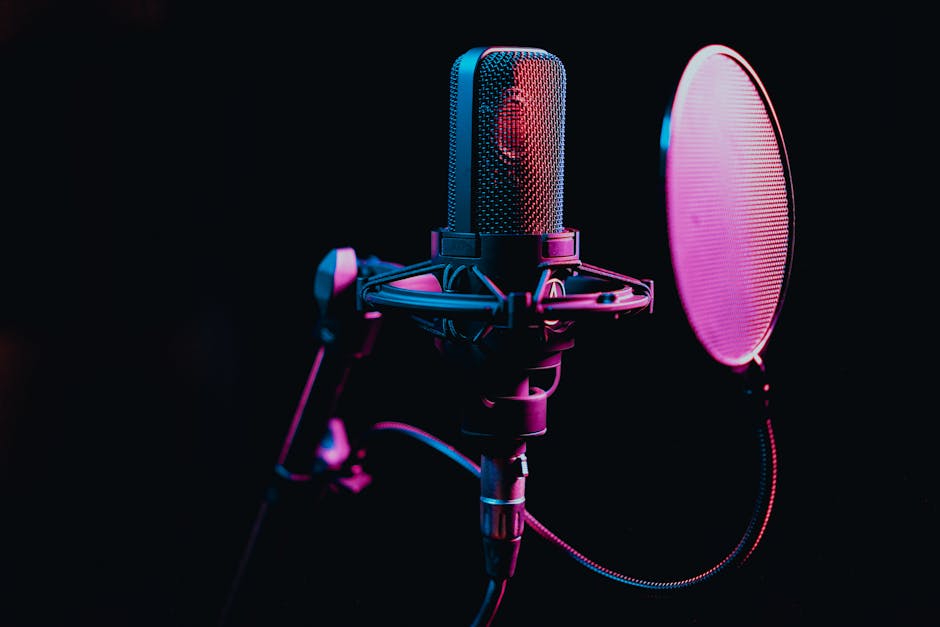My Review of Podcast Intro and Outro Music Services.
My Review of Podcast Intro and Outro Music Services
Every podcaster knows the feeling: you’ve poured your heart into creating compelling content, crafted engaging scripts, and meticulously edited each episode. But then comes a crucial element that often gets overlooked until the last minute – the intro and outro music. It’s more than just a jingle; it’s your podcast’s sonic handshake, its brand identity, and the auditory cue that tells listeners, “You’re in the right place!” Over the years, as my podcast grew, I realized the immense impact of this short musical snippet. What started as a casual search quickly evolved into a dedicated quest to find the perfect sound. This journey led me through a maze of services, from sprawling royalty-free libraries to bespoke custom compositions. Today, I’m sharing my honest, in-depth review of the various podcast intro and outro music services I’ve personally used, highlighting what worked, what didn’t, and what you should absolutely consider before making your choice.
My Initial Quest for a Distinct Podcast Sonic Signature
When I first launched my podcast, the intro and outro music was an afterthought. I grabbed a generic, royalty-free track that sounded “okay” and slapped it on. Big mistake. Within a few months, I noticed my podcast sounded like a dozen others. There was no distinct character, no immediate recognition. This sparked my deep dive into the world of podcast music services. My goal was clear: find a sound that was unique, memorable, and perfectly aligned with my podcast’s personality. This wasn’t just about finding a good tune; it was about branding and creating an immersive experience for my listeners from the very first second to the last. I started by exploring the most common and seemingly easiest options available, which primarily involved large music libraries.
Navigating the Vast Oceans of Royalty-Free Music Libraries
My first serious foray was into the realm of royalty-free music libraries. These platforms are incredibly popular, and for good reason: they offer a massive selection of tracks at relatively affordable prices, often through subscription models or one-time purchases. The promise of “royalty-free” means you pay once (or subscribe) and can use the music without worrying about ongoing performance royalties, which is a huge relief for podcasters. I spent countless hours sifting through platforms like Epidemic Sound, AudioJungle, and Artlist.
What I Appreciated:
- Sheer Volume: The selection is astounding. You can find almost any genre, mood, or tempo imaginable. This broad choice meant I could experiment with different vibes for my show.
- Cost-Effectiveness: For a budget-conscious podcaster, these services are a lifesaver. A monthly subscription often grants unlimited downloads, which is fantastic if you’re producing a lot of content or want to frequently refresh your sound.
- Instant Access: No waiting. Once you subscribe or purchase, the track is yours to download and use immediately. This is great for quick turnarounds.
Where I Found Challenges:
- The “Generic” Trap: Despite the vastness, finding something truly unique can be difficult. Many tracks, while professionally produced, can still feel a bit generic. There’s a higher chance another podcast might use the exact same track, which defeats the purpose of creating a unique sonic identity.
- Licensing Nuances: While “royalty-free” sounds simple, the devil is in the details. Each platform has its own licensing terms regarding commercial use, broadcast rights, and attribution. I had to read the fine print carefully to ensure I was compliant, especially with platforms that offered free tiers with more restrictive Creative Commons licenses.
- Search Fatigue: Sifting through thousands of tracks to find “the one” can be incredibly time-consuming and frankly, exhausting. Filters help, but it still requires a significant investment of your time.
Weighing the Investment in Custom Composition for My Podcast’s Opening
After experiencing the hit-or-miss nature of royalty-free libraries, I began to wonder: what if I just had something made specifically for my show? This led me to explore custom composition services. The idea of having a piece of music tailored exactly to my podcast’s theme, length, and energy was incredibly appealing. I looked at options ranging from independent music producers to platforms like Fiverr and Upwork, where you can commission artists directly.

The Clear Advantages:
- Uniqueness Guaranteed: This is the ultimate differentiator. No one else will have your exact intro/outro music. It becomes an intrinsic part of your brand, instantly recognizable.
- Perfect Fit: You get to articulate your vision, and the composer brings it to life. You can specify mood, instrumentation, tempo, and even sound effects. This level of control ensures the music perfectly complements your content and voice.
- Professional Polish: Often, custom compositions come with high production value, mixed and mastered specifically for your audio environment. This elevates the overall professional feel of your podcast.
The Realities of This Path:
- Cost: This is, without a doubt, the most significant barrier. Custom music can range from a few hundred dollars for a basic jingle to thousands for a complex, fully produced track. It’s a significant investment, especially for new podcasters.
- Time Investment: The process involves communication, revisions, and waiting for the composer to deliver. It’s not an instant solution and requires patience and clear direction.
- Finding the Right Composer: Just like finding the right editor or co-host, finding a composer who understands your vision and delivers quality work within budget can be a challenge. Portfolios and testimonials become crucial.
My experience with custom composition was largely positive, but it required a much larger financial and time commitment. For my main podcast, the investment paid off in terms of brand recognition and listener feedback. For a smaller, niche project, I might still lean towards a well-chosen royalty-free track.
Evaluating User Experience and Licensing Clarity Across Platforms
Beyond the music itself, the practical aspects of using these services greatly influenced my review. How easy was it to find what I needed? Was the licensing straightforward or a legal minefield? These operational details can make or break the experience for a busy podcaster.
The Search and Discovery Process: Friend or Foe?
In music libraries, the search functionality is paramount. I looked for robust filtering options (genre, mood, instrument, tempo, duration, vocal/instrumental), curated playlists, and good tagging. Some platforms excelled here, offering intuitive interfaces that made browsing a pleasure. Others felt like digging through a digital attic. For custom services, the “search” becomes more about vetting talent – reviewing portfolios, reading client feedback, and clear communication during the briefing stage.
Decoding the Licensing Maze: A Crucial Hurdle
This is where many services differentiate themselves, and where podcasters can easily get tripped up. My review prioritized services that offered:
- Clear, Concise Terms: No jargon-filled legal documents that require a law degree to understand.
- Podcast-Specific Licenses: Some platforms offer specific licenses for podcasting, which simplifies things immensely.
- Perpetual Use: Once you license a track, you shouldn’t have to worry about renewal fees or losing rights later on (unless specified for subscription models).
- Worldwide Rights: Ensuring your podcast can be heard anywhere without legal issues.
I found that subscription services generally had the clearest and most comprehensive licensing for podcasters, as it was often built into their model. One-off purchase libraries sometimes had more granular (and thus more confusing) options depending on the intended use.
Beyond the Melody: Sound Quality and Brand Alignment Insights
An intro or outro isn’t just about the notes; it’s about the entire audio experience. The sound quality, how well it integrates with your voice, and its ability to reinforce your brand are critical factors I considered.
The Imperative of Pristine Audio Quality
A poorly produced intro can undermine even the most professional podcast. I paid close attention to:
- Mastering: Was the music professionally mastered? Did it sound “finished” and balanced?
- Clarity and Dynamic Range: Did it sound muddy or tinny, or was it clear and vibrant?
- Consistency:




Post Comment